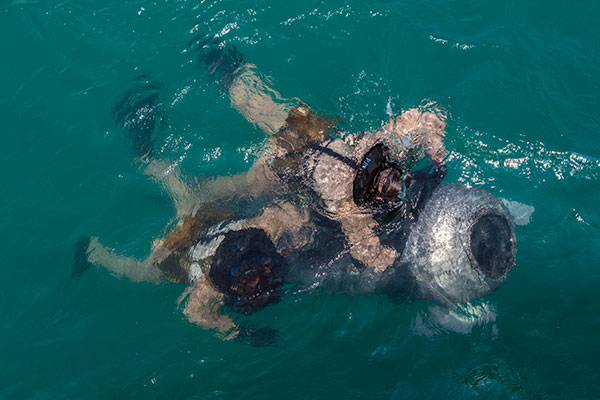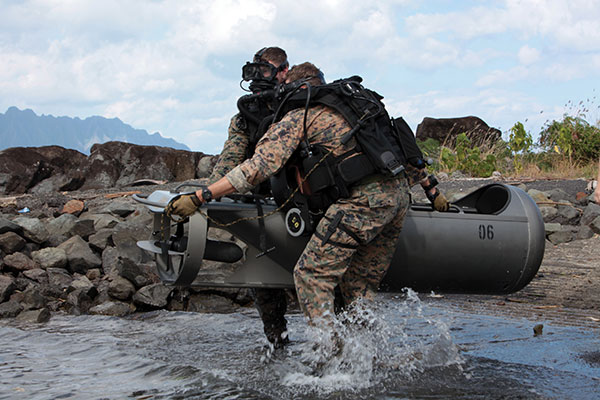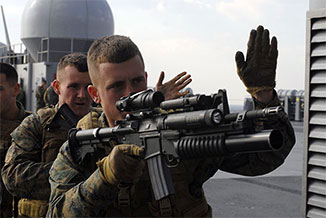Diver Propulsion Device (DPD)
The Diver Propulsion Device (DPD) is a battery-powered vehicle that can carry 2 men and their equipment below the water or along its surface.
It is employed as a clandestine insertion platform by combat divers with the Navy SEALs and USMC units such as MSOBs, Force Recon and Battalion Recon. Other users include Army Special Forces SCUBA teams. The devices allow combat divers to travel considerably further under water and emerge less fatigued than when moving under their own power.
The DPDs in use with U.S. military units are manufactured by STIDD Systems Inc. The devices feature hard coat anodized hulls made from welded marine grade aluminum. Buoyancy is provided by a closed cell PVC composite core. The front of the DPD features a clear polycarboante faceplate.
DPDs can operate down to 35 meters below the surface and have a range up to 12 kilometers. Average speed is 1.2 knots.
The standard and most commonly used model uses a single steerable low noise electronic thruster powered by a Lithium-Ion battery. An extended-range version features a second battery while a third, faster model boasts 2 independent thrusters with a battery powering each.
The DPD's depth and heading is controlled by a single-hand-operated yoke. The pilot station on DPDs house a magnetic compass and depth gauge. An optional navigation panel features a moving map display along with data from a bottom scanning SONAR.
With a length of 2.23 meters and an in-air weight of only 175 lbs, the DPD can easily be launched from a range of platforms, including CRRCs. It can be carried to and from the beach by its operators and air dropped into the water by parachute.
DPD Video
DPD - Specifications
| Capacity | 2 Combat Divers |
| Engine | Lithium-Ion battery / 28VDC steerable electric thruster |
| Dimensions | Length - 2.23 meters (deployed) Length - 1.38 meters (stowed) Width - 1.86 meters (deployed) Width - 0.61 meters (stoweed) Height - 0.61 meters (deployed/stowed) |
| Weight | 175 lbs |
| Ranger | 0-12 kilometers |








